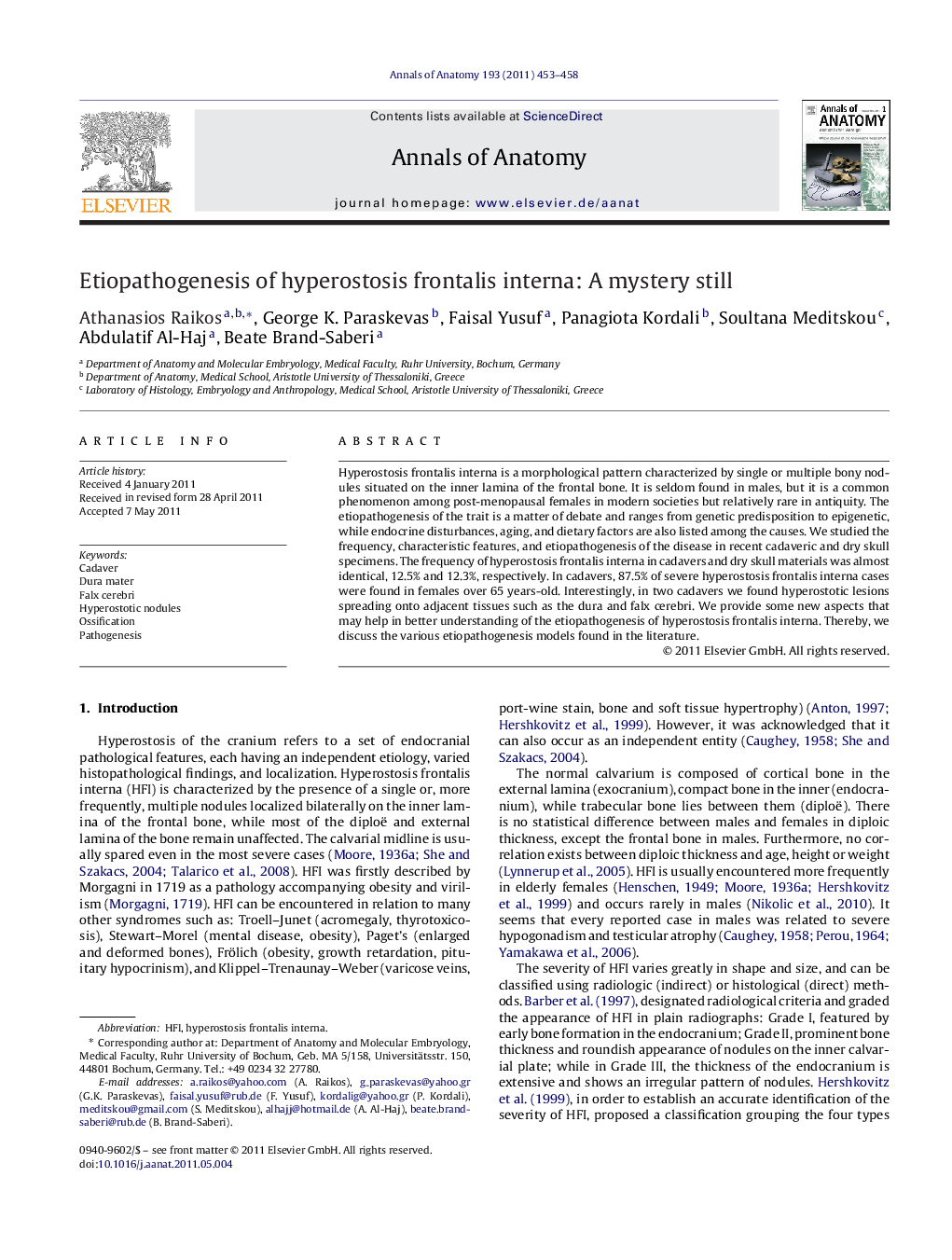| Article ID | Journal | Published Year | Pages | File Type |
|---|---|---|---|---|
| 8461961 | Annals of Anatomy - Anatomischer Anzeiger | 2011 | 6 Pages |
Abstract
Hyperostosis frontalis interna is a morphological pattern characterized by single or multiple bony nodules situated on the inner lamina of the frontal bone. It is seldom found in males, but it is a common phenomenon among post-menopausal females in modern societies but relatively rare in antiquity. The etiopathogenesis of the trait is a matter of debate and ranges from genetic predisposition to epigenetic, while endocrine disturbances, aging, and dietary factors are also listed among the causes. We studied the frequency, characteristic features, and etiopathogenesis of the disease in recent cadaveric and dry skull specimens. The frequency of hyperostosis frontalis interna in cadavers and dry skull materials was almost identical, 12.5% and 12.3%, respectively. In cadavers, 87.5% of severe hyperostosis frontalis interna cases were found in females over 65 years-old. Interestingly, in two cadavers we found hyperostotic lesions spreading onto adjacent tissues such as the dura and falx cerebri. We provide some new aspects that may help in better understanding of the etiopathogenesis of hyperostosis frontalis interna. Thereby, we discuss the various etiopathogenesis models found in the literature.
Related Topics
Life Sciences
Biochemistry, Genetics and Molecular Biology
Cell Biology
Authors
Athanasios Raikos, George K. Paraskevas, Faisal Yusuf, Panagiota Kordali, Soultana Meditskou, Abdulatif Al-Haj, Beate Brand-Saberi,
